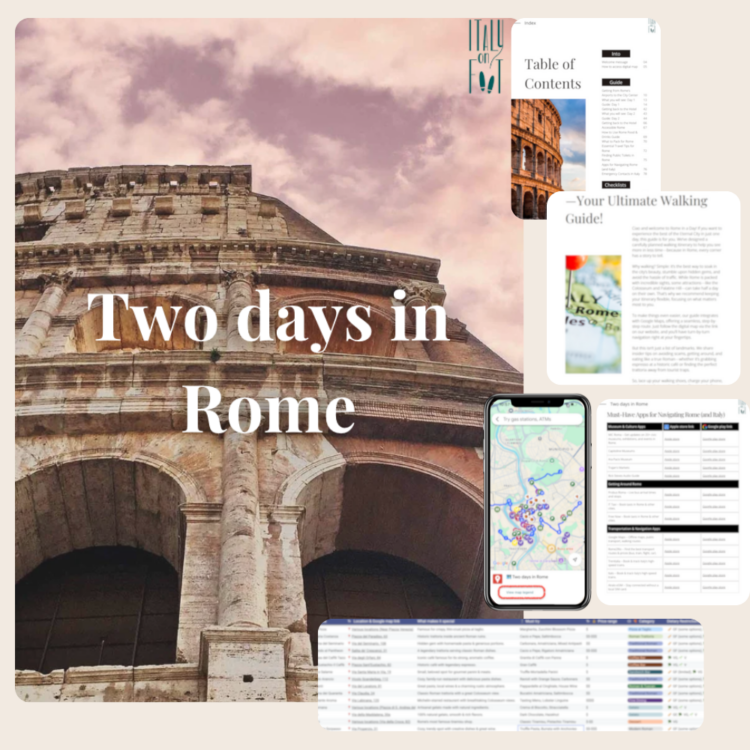Milan oozes sophistication, culture, and history, making it a city that’s well worth exploring. Getting around can seem daunting at first, but don’t worry, public transport in Milan is both efficient and user-friendly. If you’re visiting and want to know how to move around like a local, here’s everything you need to know to get from point A to point B with ease.
Unpacking the Metro System
One of the quickest ways to navigate Milan is via its metro system. Milan’s metro is extensive, boasting four lines, with a fifth currently under construction. You’ll find that the network connects beautifully to key landmarks and districts, making it easy to tour the city. The lines are color-coded and numbered: M1 (red), M2 (green), M3 (yellow), and M5 (purple). Each of these lines intersects at various points, which enhances connectivity.
The M1 line is a boon if your visit revolves around business engagements or major tourist spots like the Duomo and San Babila. Then there’s the M3 line, excellent for tourists who plan to visit the commercial hub, Via Montenapoleone, while also connecting you to Milano Centrale. The green M2 line is another important artery, providing access to Milano Centrale and peripheral stops. If sports or regional trains are on your radar, the M5 line is what you need.
Metro tickets can be conveniently bought at stations, kiosks, or licensed shops. Choose between single-trip tickets, 24-hour travel cards, or even a weekly pass if your stay is extended. Generally, the Metro runs from 6 am to midnight. The frequency of trains varies depending on the line and the time of the day but expect a train every 2-4 minutes in central areas. If you’re planning to stay in the heart of Milan, you might not need the Metro for more than a trip to the airport or an outlying suburb.
Trams: Vintage Meets Modern
Milan’s trams are one of the city’s oldest transport systems, dating back to the late 19th century. Originally horse-drawn, today’s trams blend historic charm with modern efficiency. Milan boasts 18 tram lines in total, which crisscross the city providing excellent service well past midnight. The numbered tram lines range from 1 to 33, allowing you to find a route that suits your itinerary easily.
Unlike the Metro, which tends to be faster but more crowded, trams offer a more scenic, relaxed way to explore Milan. Some lines traverse routes that showcase iconic parts of the city, including historical buildings and scenic streets. Interestingly, some trams are still vintage 1500 series models from 1928-1930, adding a nostalgic touch to your journey.
Tickets are available at metro stops, kiosks, and shops around the city. You can also opt for daily or multi-day travel passes if you plan to hop on and off frequently. Trams generally run from around 4:30 am until 2:30 am, making them a reliably frequent option. With longer operating hours compared to buses and the Metro, they are ideal for both daytime sightseeing and nighttime escapades.
Buses: Extensive and Reliable
For areas the Metro and trams don’t reach, Milan’s extensive bus network steps in. With over 80 local bus routes, along with a few trolley buses, the bus system is a vital part of public transport in Milan. Milan’s buses are particularly useful for navigating outer neighborhoods or catching a ride when the other systems close for the night.
Night buses run from midnight until early morning, focusing on the city’s nightlife hubs and residential neighborhoods. There are 15 designated night routes, ensuring you have safe and reliable options at all hours. The standard ticketing system applies here too, so you can use your daytime ticket on night buses without any hassles.
Getting from Milan’s Linate Airport to the city center is another task efficiently handled by local buses. Buses 73 and X73 provide regular service and are a cheaper alternative compared to taxis. Tickets for both day and night buses can be purchased at metro stations, kiosks, and even parking meters scattered throughout the city.
Taxis: A Convenient Alternative
While public transport covers nearly every corner of Milan, a taxi ride may occasionally be your best option. Unlike many other European cities, taxis in Milan do not typically stop when hailed from the street. Instead, you’ll need to get to a designated taxi stop or call one of the city’s numerous radio taxi services.
Though relatively pricier than public transport, Milan’s taxis are not the most expensive in Europe. Tariffs include minimum fare charges and rates per kilometer, with extra fees applicable during nights and public holidays. Additionally, booking a taxi by phone can incur more charges as the meter runs from the moment the call is received.
There’s a fixed rate for rides to and from Malpensa Airport, which eliminates the stress of haggling over fares. Taxi stands are plentiful around major attractions and transport hubs, allowing you to catch a cab easily when needed. Radio taxi services also add convenience, offering a reliable way to get a ride when and where you need it.
Travel Tickets and Cards: Maximizing Your Budget
Milan’s public transport system offers a variety of tickets and travel cards designed to suit different needs. If you’re planning multiple trips across various means of transport, it’s wise to invest in a 24-hour or 72-hour pass. All tickets and travel cards are valid across buses, trams, the Metro, and urban trains.
Single tickets cover 90 minutes of travel, including multiple Metro line changes, but you can’t exit and re-enter the station on the same ticket. There are also special tickets for luggage, ensuring you comply with size and quantity restrictions. If you’re in Milan for a more extended stay, consider the weekly, monthly, or even annual travel cards – though these are usually more beneficial for locals than tourists.
Some of the most popular options for short-stay visitors include:
– Single ticket at €2
– 24-hour travel card at €7
– 72-hour travel card at €12
The Green Option: Bike-Sharing
For the eco-conscious traveler, Milan offers robust bike-sharing programs. Navigating the city on a bike is an enjoyable and sustainable way to explore. Several docking stations are positioned around key locations, making it convenient to pick up and drop off bikes. Whether you’re commuting or just enjoying a leisurely ride, bike-sharing in Milan is an excellent way to see the sights while reducing your environmental footprint.
In Milan, you’re spoilt for choice when it comes to getting around. From the efficient Metro and charming trams to the extensive bus network and convenient taxis, the city offers something for everyone. So take advantage of Milan’s public transport system and explore every inch of this magnificent city with ease.



